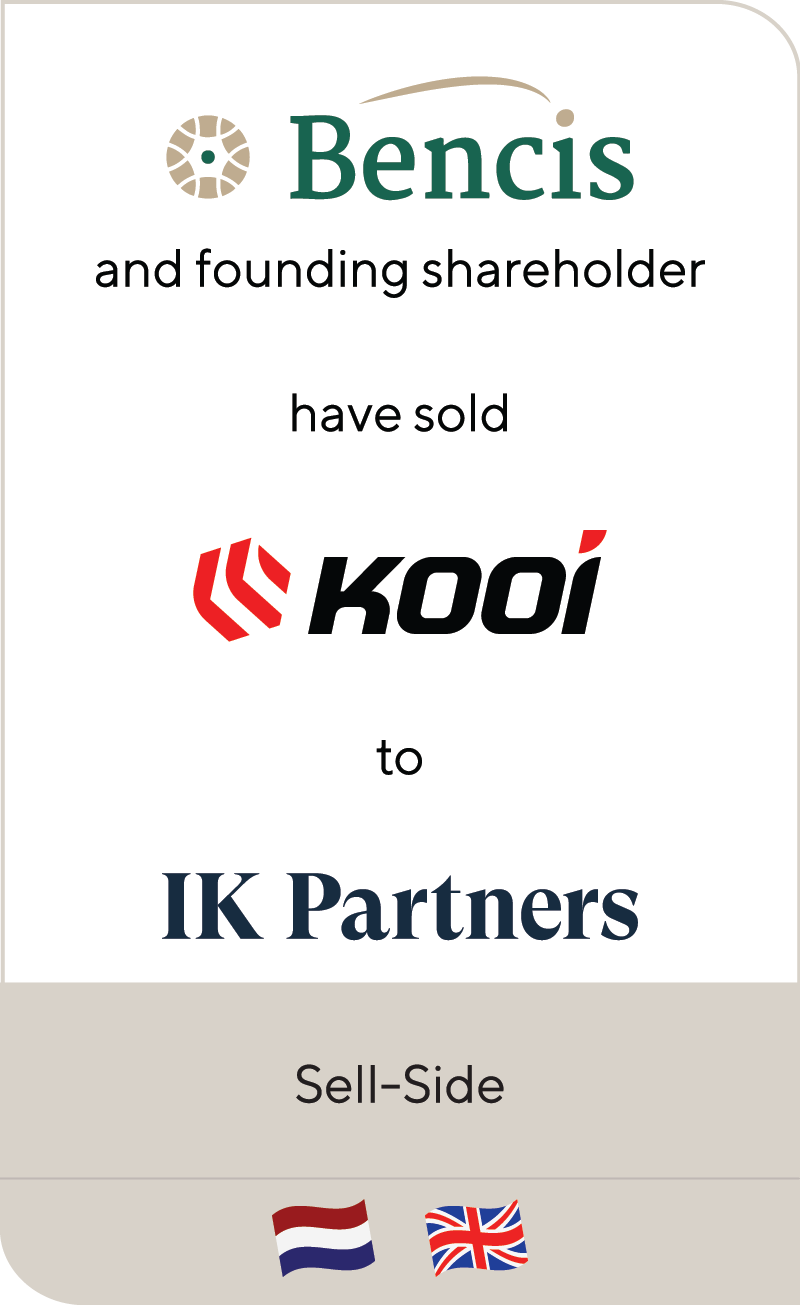Global Energy Transition
Nov 2024
| Closing the gap on global emissions to align with the 2050 NetZero targets outlined in the Paris Climate Accord will be a challenge. Fortunately, such challenges often lead to opportunities, especially in the private capital markets space.
Closing the output gap is achievable and will create investment opportunities across a host of sectors, for every type of private equity investor regardless of their required holding period, IRR, risk tolerance, or yield expectation. Lincoln International reviewed the challenges and opportunities at the True Perspectives event with L.E.K. Consulting in July in Paris. At this gathering, Lincoln International’s European Energy Transition & Infrastructure Managing Director, Carlos Candil, discussed financial sponsors’ role in global energy transition, and opportunities for corporate investors and financial sponsors. |
Summary
-
Lincoln International’s Managing Director, Carlos Candil, discussed financial sponsors’ role in global energy transition, and opportunities for corporate investors and financial sponsors at the True Perspectives event with L.EK. Consulting in July in Paris.
- Sign up to receive Lincoln's perspectives
The State Of Decarbonization: A Big Opportunity
The 2015 Paris Climate Accords was signed by 195 countries, and subsequently signed by nearly every other country since then. These accords set “NetZero” emissions targets (not actual zero, but 1990-levels of emissions) for 2050 to avoid potentially catastrophic climate change.
Since the signing, major governments and investors have spent billions aimed at reducing emissions. The U.S. alone has put in place a program that will involve $400 billion in new spending and tax credits aimed at reducing emissions in its Inflation Reduction Act (IRA), signed into law August 2022.
While these investments have led to a downward trend in emissions, there is still a sizeable gap between the targets and the current Economic Transition Scenario–about 35 gigatons of CO2 emissions.
Regarding the US, the world will have to wait for the outcome and aftermath of the November election to see if there will be a change in the US approach to decarbonization and emissions reduction.
In Europe, the political will seems at least more consistent.
Although all Paris Accords signatories are pushing towards a 2050 target, there are intermediate targets in Europe for 2030, and those targets have teeth. There are substantial financial penalties for countries that fall short.
Europe has also put concrete limits on emissions into other parts of the law. For example, a law prohibiting the manufacture of internal combustion engine vehicles will go into effect sometime between 2035 and 2040.
This is not just window dressing. “Road” (which covers land-based vehicles) is the second-highest contributor to global emissions. Steps taken by Europe around electric vehicles should make a significant impact on reaching decarbonization goals.
Net Zero – 1.5 C increase in temperatures by 2050 and Power and Transport are largest sectors to be decarbonized
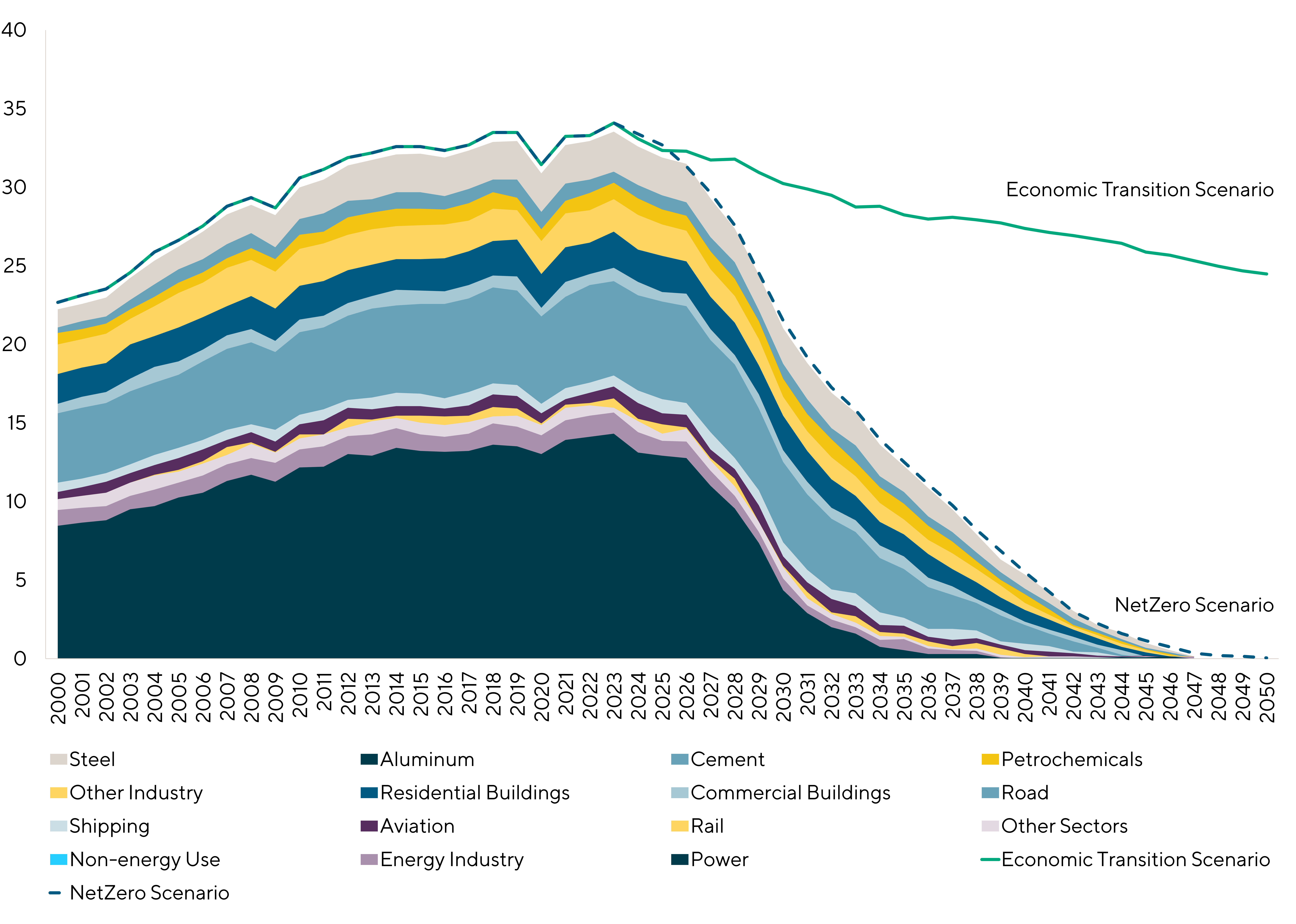
Source: BloombergNEF
Nine Pillars: Straightforward, But Not Easy
Nine pillars outline the concrete steps that need to occur to meet the 2050 targets.
If the world can meet these targets, the other activities around reduction are simply the icing on the cake.
To be sure, if the global community is not able to achieve these goals, it will be tough to meet the overall goals.
So, how reasonable are these targets?
Many are quite doable. Wind and solar capacity tripling by 2030, and tripling again by 2050 is well within reach.
Other targets are more challenging.
For example, some industries, like electric vehicles, are perhaps prematurely eulogized, with the UK pushing back initially targets for the elimination of gasoline-powered cars in the face of moribund electric vehicle sales during Rishi Sunak’s government to only change again by the new Labour Party
However, news of the EV’s demise in Europe may be exaggerated. The market is growing at still by more than 20 percent per annum. That would be impressive growth for many other industries, but not for one that needs to be doubling or tripling to reach long-term targets.
Europe and the world will need fresh approaches for many of the fundamental pillars for reaching a Net Zero world. And, whenever business requires innovation, private equity can lend a helping hand.
Nine fundamental pillars of a Net Zero world
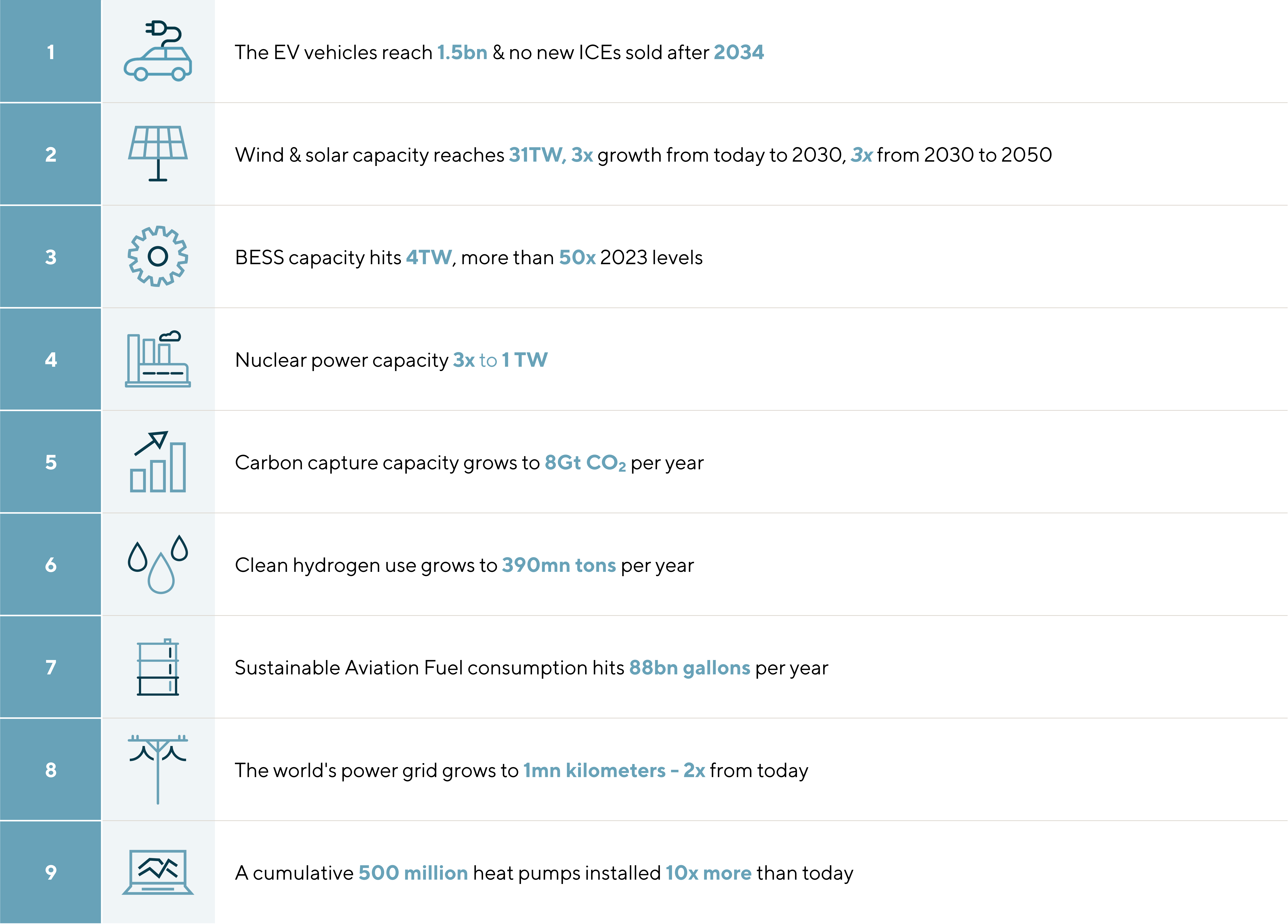
Source: BloombergNEF
National Investments: Reputations and Realities
Electric vehicles are not the only area where stories do not line up exactly with the numbers.
China, which has a reputation for being a major polluter, is the global leader for investment in emissions reduction by a wide margin, eclipsing the US and Europe combined.
At the same time, the IRA has conferred a reputation for America leading in energy transition investments. It does invest significantly, but not as much as Europe, at 303 billion euros, relative to Europe’s 360 billion euros.
Key economies’ spending levels are off-track for net zero
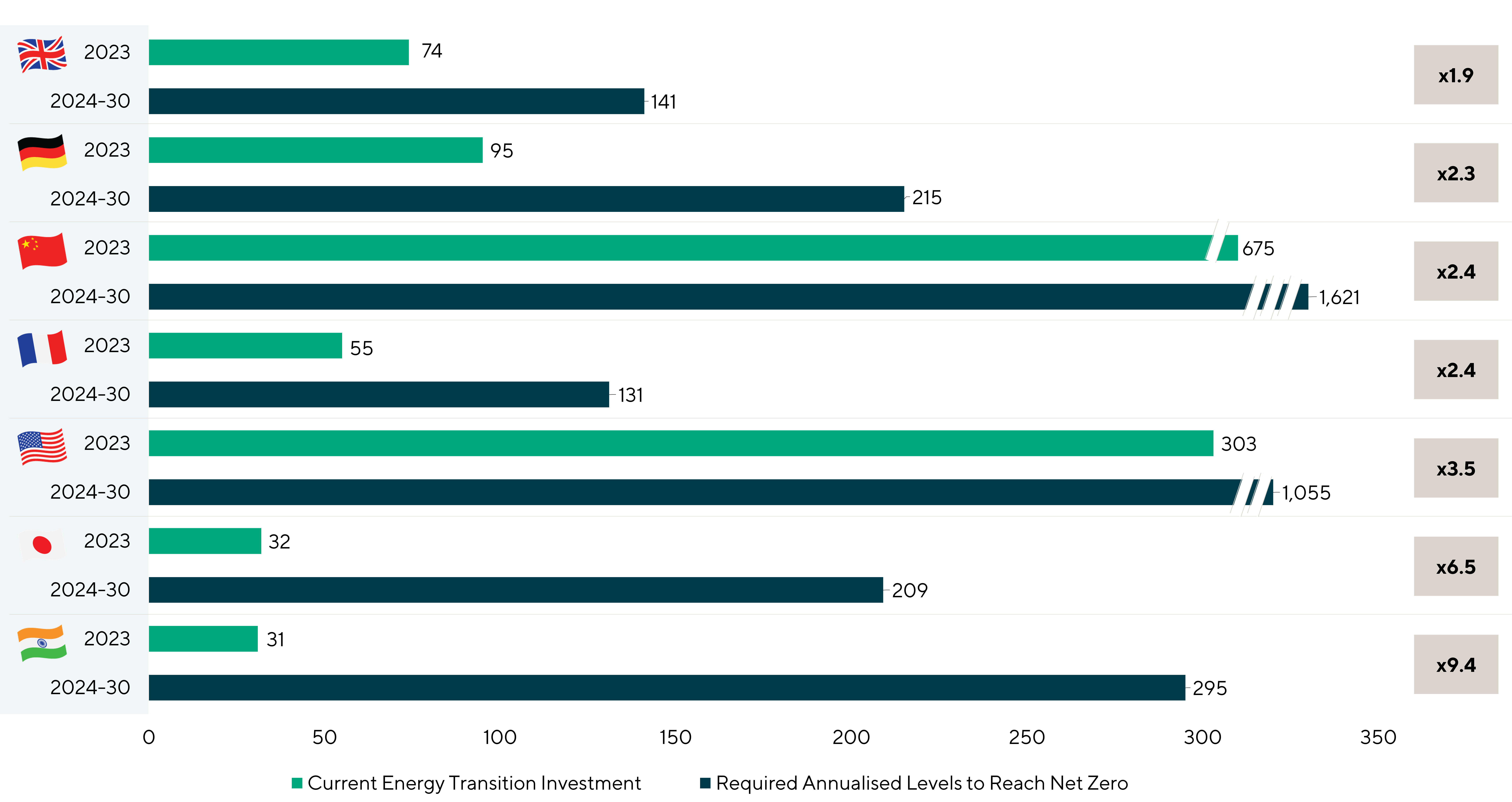
Source: BloombergNEF
Investment rankings notwithstanding, every country is falling short of what they need to invest to meet Paris Accord goals.
It is probably not realistic to expect that any country will triple their investment year-over-year, let alone tripling it twice, as would be required for India to meet its goals.
Still, we believe that there is a good chance that governments may commit to extraordinary spending increases as begin to approach the half way point this decade.
Renewables market risk and return profiles for PE and Infrastructure sponsors
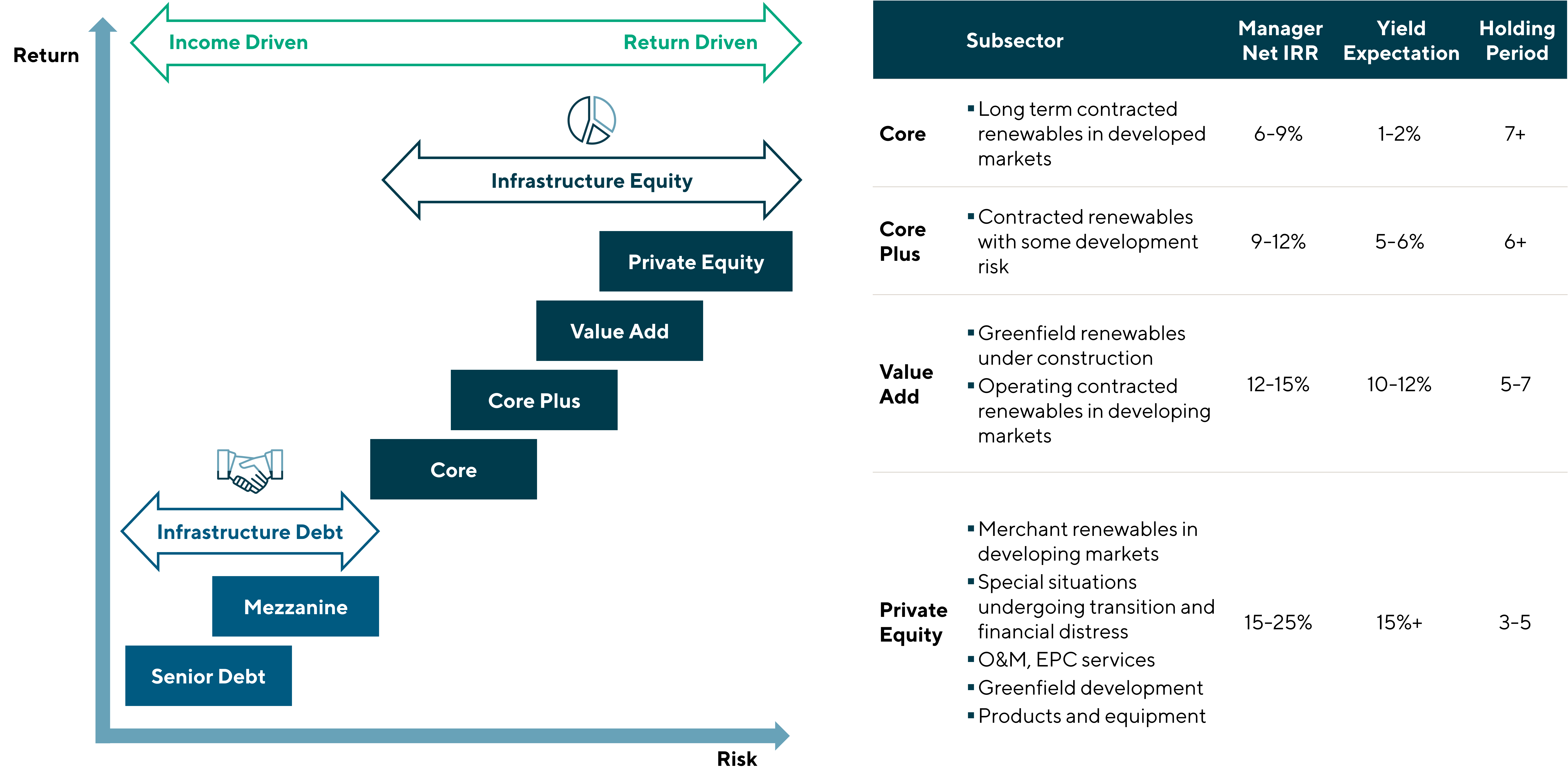
Opportunities At All Levels
The size and scope of the challenge of energy transition means that there are opportunities for every type of investor, regardless of their holding period, required IRR, risk tolerance, or yield expectation.
With $1.8 trillion required to meet global energy transition targets, there is enough investment to go around for nearly everyone.
There are opportunities for private equity core+ as well as core investors across the renewables value chain
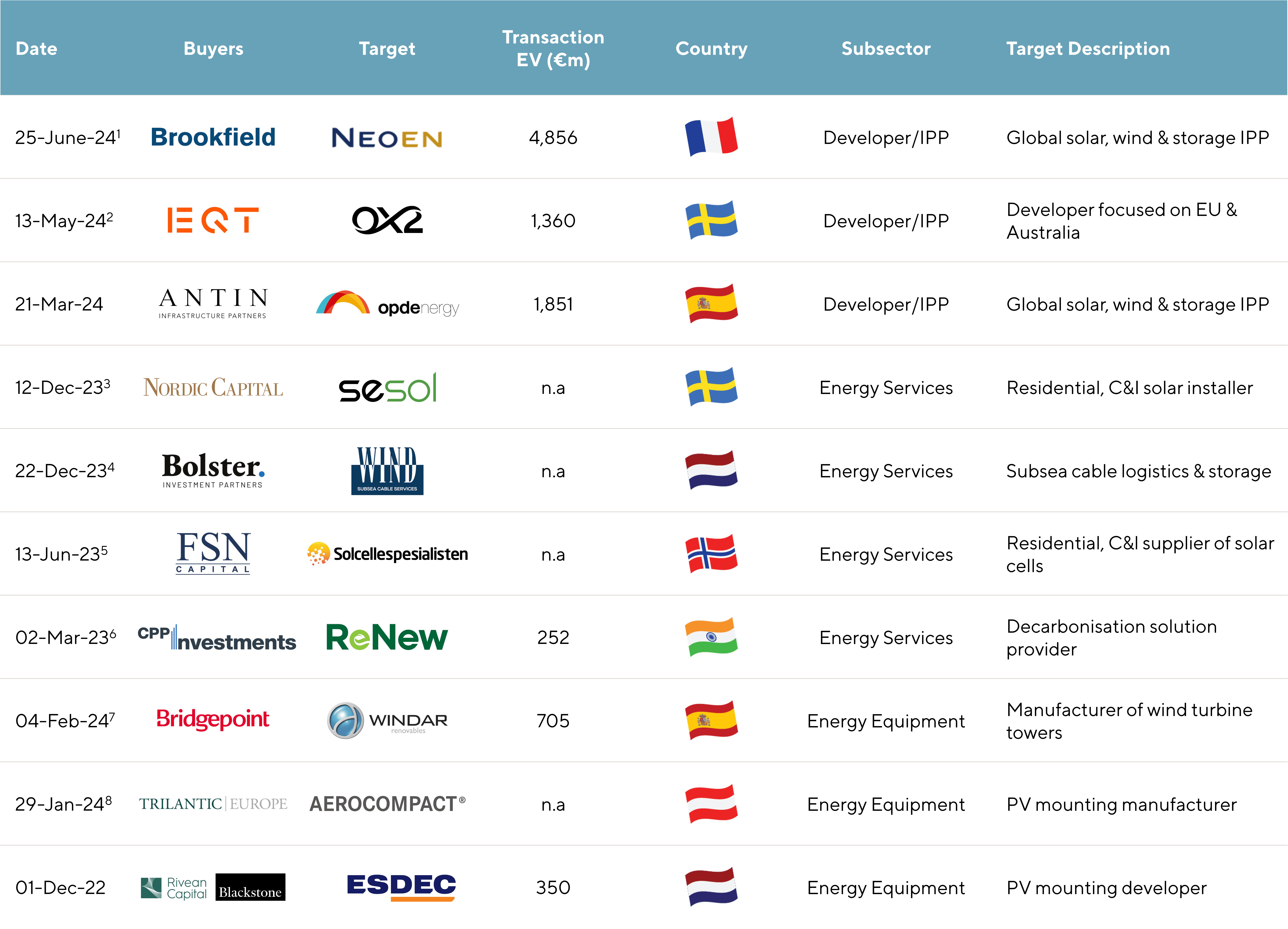
i. Source: Mergermarket, CIQ, Inframation
ii. (1) 53.31% stake, signed deal not closed; (2) Proposed transaction not closed; (3, 4 & 5) Majority stake not outright acquisition; (6) 48.1% stake; (7) 32% stake; (8) 60% stake
In the last few years, Lincoln International has completed more than 50 transactions related to energy transition, with most in the higher-risk, higher-reward Private Equity Infrastructure segment.
We expect to see more such deals moving forward. To be sure, given the level and volume of activity that will be required, it will be all hands on deck not just for Lincoln International, but those we serve and advise as well.
Recent Transactions
Contributor
Meet Professionals with Complementary Expertise

I am a rigorous advocate for my clients with a hands-on, communicative approach, focused on delivering intense advocacy and outlier results.
Sean Bennis
Managing Director & Co-head of Industrials
Chicago
I build lasting client relationships that are rooted in transparency and trust.
Aaron Klein
Managing Director
Chicago
As a trusted advisor, my role is to listen, create options and pursue the path that best achieves a client’s total objectives.
Saurin Mehta
Managing Director & Co-head of Business Services
Chicago
I maintain an open and transparent dialogue with clients to achieve mutually beneficial outcomes.
Juan Carlos Montoya
Managing Director
Frankfurt
I strive to deliver value-added advice, leveraging deep industry knowledge and extensive industry relationships.
Guillaume Suizdak
Managing Director & Co-head of Industrials, Europe
Paris





